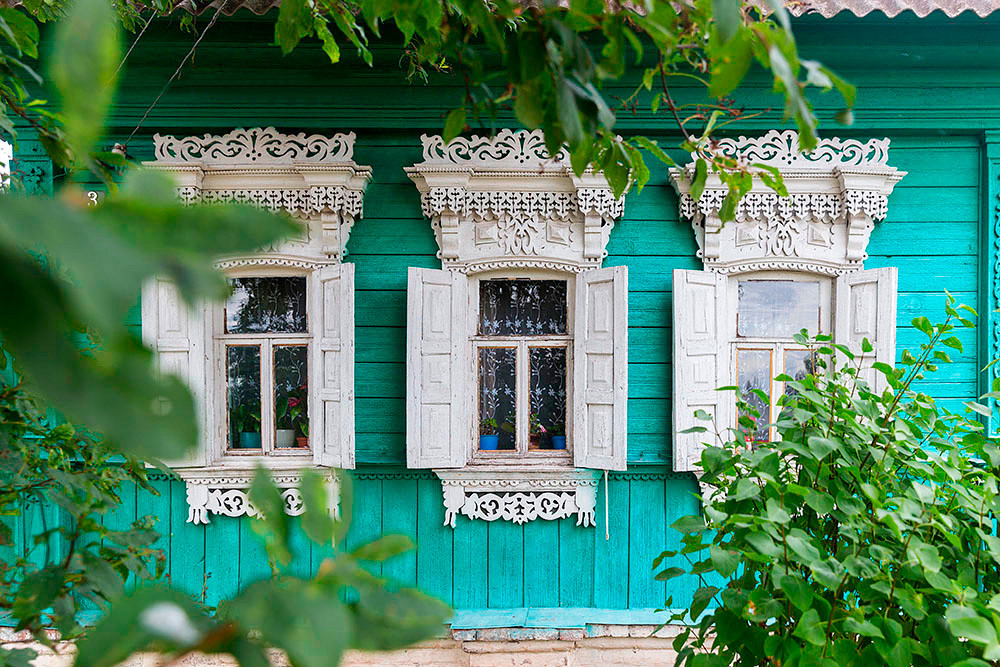What is 'Russian style' and how was it born?

What is the first thing that comes to your mind when you hear the words Russian style? Most likely, kokoshniks - the traditional headdress worn by Russian women - Gzhel or Khokhloma patterns, or carved window frames.
But how and when was this style born, and do these patterns have a meaning?
Peter the Great destroyed the Russian style (well, almost)
Peter the Great, having studied in Europe and established diplomatic and friendly ties with it, back home decided to get rid of everything “authentically” Russian: he waged an almost open war on everything archaic and medieval in Russia, zealously trying to make the country more modern and more European. The tsar invited Italian architects to build palaces instead of wooden quarters, forced boyars to wear European dress instead of traditional kaftans, to shave off their long beards and wear powdered wigs.
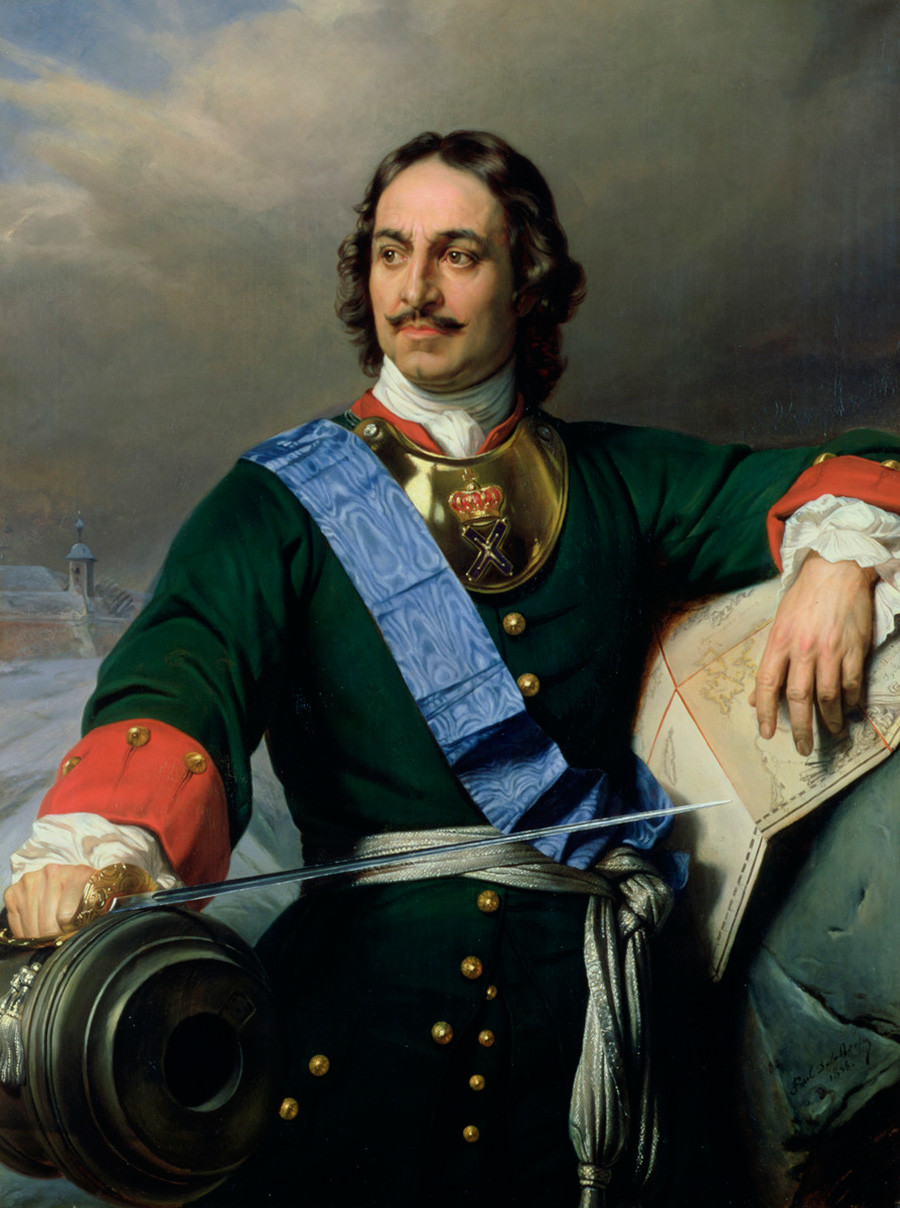
Paul Delaroche. Portrait of Peter I the Great
Kunsthalle HamburgOver the next two centuries, his heirs developed the idea of a “progressive Russia”. Even traditional church architecture was replaced in the 17th-18th centuries by European Baroque.
Peter may have been able to control the nobility and official architecture in the capital, however, in the rest of the country, ordinary people and traditional crafts continued pretty much as before.
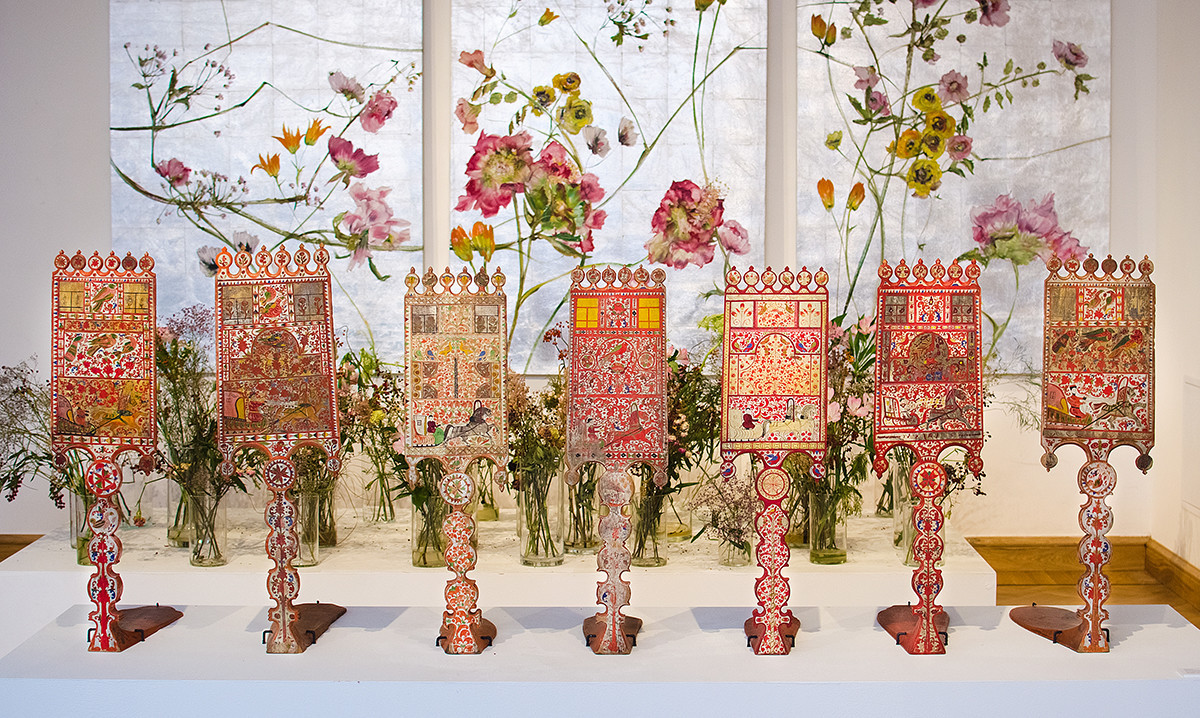
Russian distaffs
Elena Syomina/The All-Russian Decorative Art MuseumThe authorities did not try to interfere with the styles of painting on distaffs or to regulate the patterns and motifs of handicrafts across the country. Furthermore, the reforming Tsar himself contributed to the Russian style by bringing from his beloved Holland Delft porcelain, whose white and blue colors were later copied by Gzhel craftsmen.
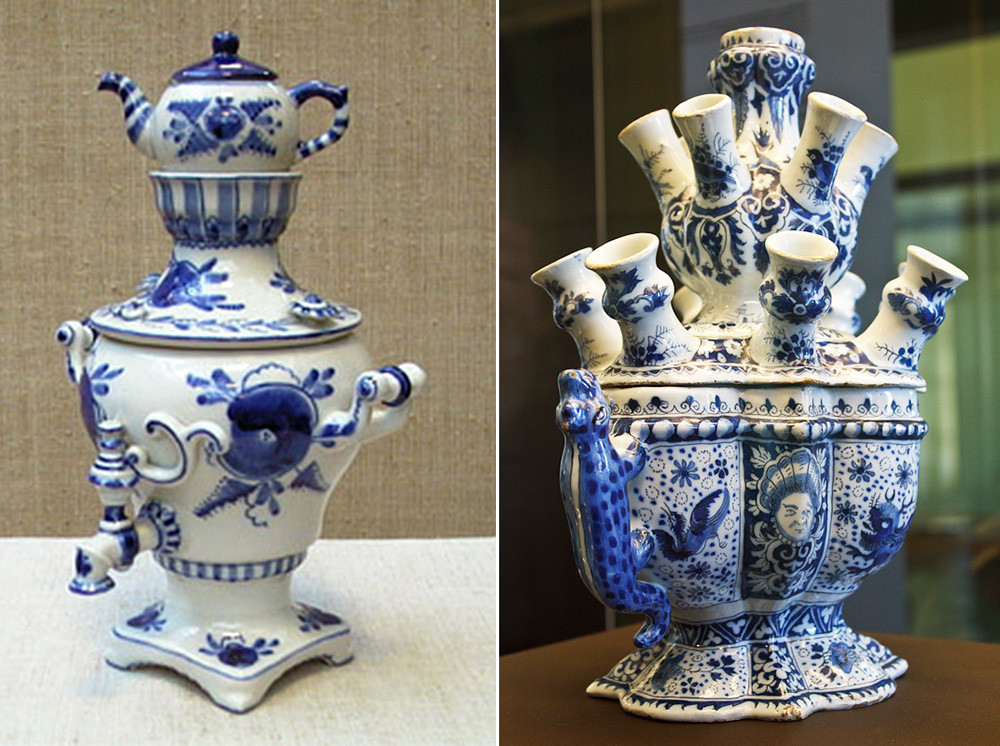
Gzhel samovar jewelry box (L), Tulip vase, Delft porcelain style (R)
Public domain; MicheleLovesArt (CC BY-SA 2.0)Back to basics
The Russian style may not have survived until the present day had it not been revived in the second half of the 19th century by the nobility, who - in search of a national idea and identity - had turned to their “roots”. Elements of primitive folk style came into fashion, while high society became interested in the life of common folk. In no small part, this trend was boosted by the Peredvizhniki (Itinerant) artists, who depicted the harsh reality of peasants' everyday life.
In addition, at the turn of the 20th century, there emerged an artistic movement Mir Iskusstva (World of Art), which sought to express authentically Russian motifs in visual arts. A fertile source of inspiration for it were Russian fairy tales, which is particularly evident in works by Viktor Vasnetsov.
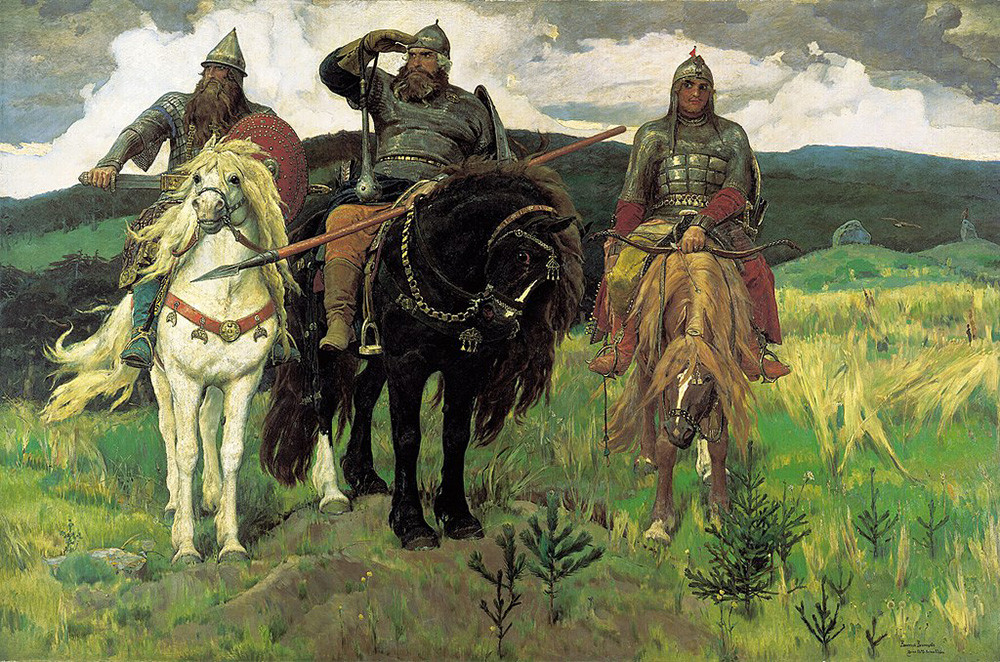
Viktor Vasnetsov. Bogatyrs
Tretyakov GalleryIn the world of book illustrations, the best-known example of the Russian style were fairy tale graphics by Ivan Bilibin.
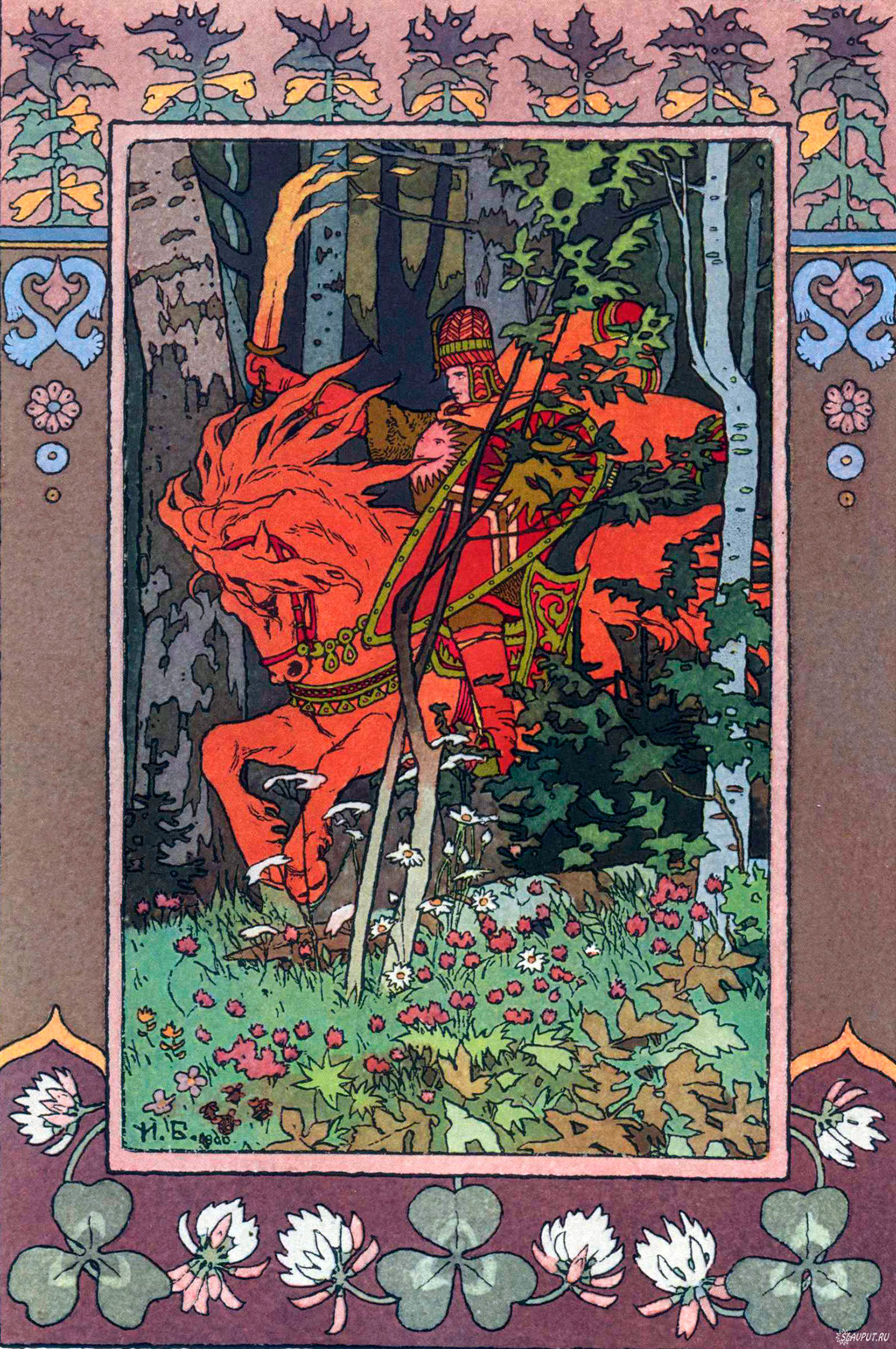
Ivan Bilibin's illustration for 'Vasilisa the Beautiful' tale
Zvonnitsa-MG, 2019Russian bogatyrs and beauties in kokoshniks became popular images in marketing and trade, as they featured on various packaging.

'Folk' chocolate
Romanenkova chocolate and candy factoryIn theater too, the Russian style became very popular. At the beginning of the 20th century, entrepreneur Sergei Diaghilev organized his famous Russian Seasons in Europe, bringing together art exhibitions, ballet and opera. The most iconic production of his Ballets Russes company was Igor Stravinsky's “The Firebird”, costumes and sets for which were designed by Leon Bakst, another member of the Mir Iskusstva group.
Russian motifs appeared also in interior design as tiled stoves and traditional embroideries became fashionable. The art of jewelry joined in too: Faberge and other masters began to produce tableware and precious trinkets in the style of medieval Russia.
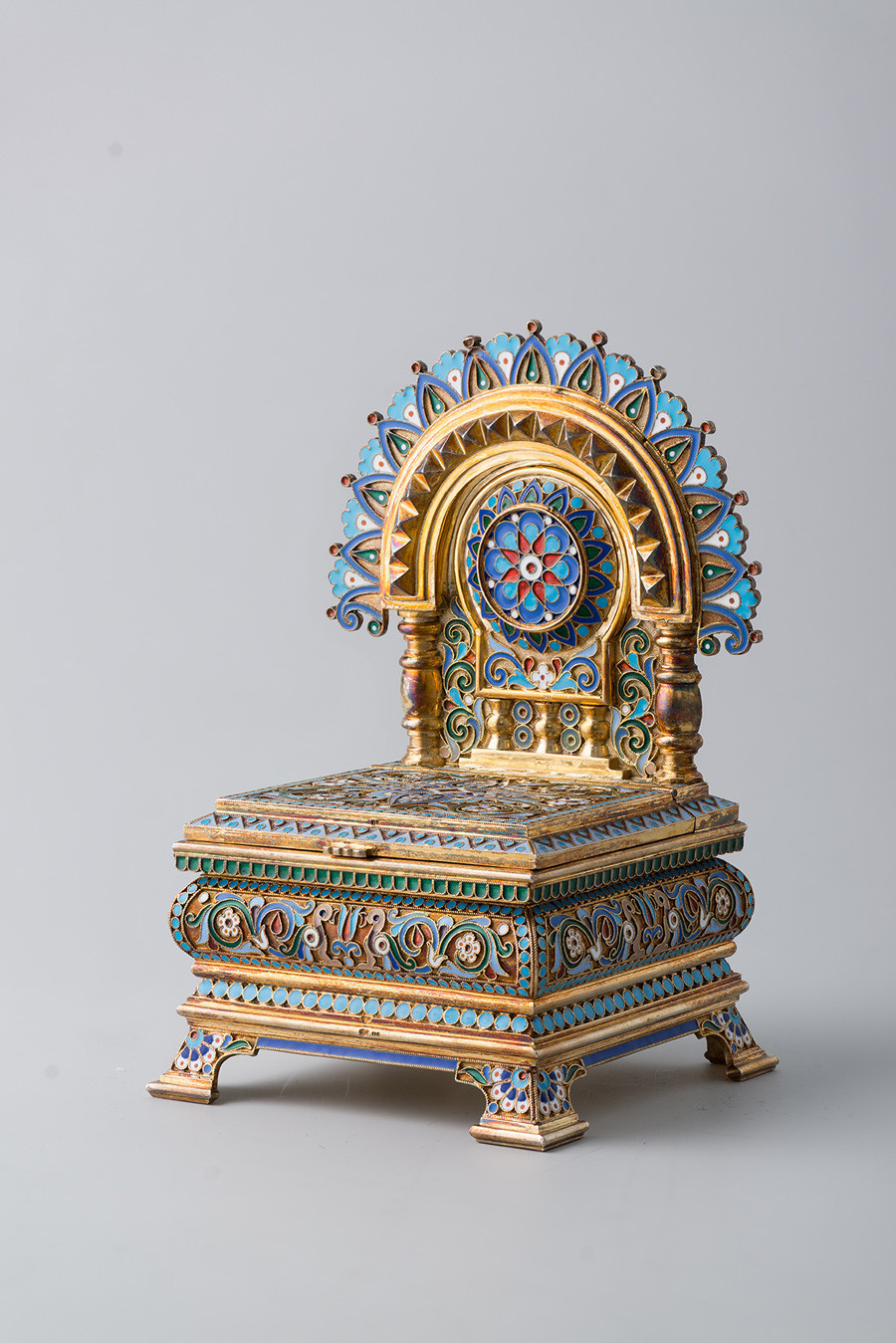
Salt shaker by P.A. Ovchinnikov's firm, 1894
State Historical MuseumThe pinnacle of this Russian revival style was the celebration of the 300th anniversary of the Romanov dynasty in 1913: the dress code for the legendary costume ball given by the last Russian emperor Nicholas II obliged guests to dress in fashions dating back to the period prior to Peter the Great and his reforms.
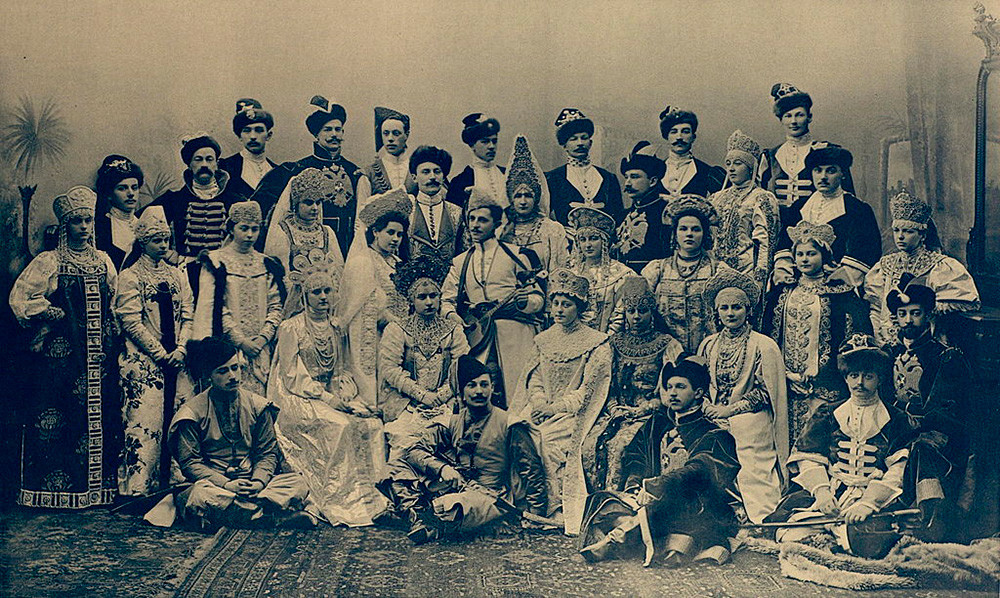
Guests of the royal costumed ball
Public domainRussian style in architecture
But, of course, the Russian style found its most evident expression in architecture. It was particularly favoured by Emperor Alexander III, a reactionary and champion of traditional values. He was often compared to a Russian bear, while his spade beard presented a stark contrast with the elegant thin moustaches of his predecessors.
It was Alexander III who approved the construction of the Church of the Savior on Spilled Blood in St. Petersburg in the so-called Pseudo-Russian style, with its colored domes and mosaics. The building, so much at variance with the general look and feel of Peter the Great's imperial city, was built in 1883-1907 and is very similar to Moscow's St. Basil's Cathedral, which was built in the 16th century.

The Church of the Savior on Spilled Blood
Legion MediaThe architectural style which is commonly known as the Pseudo-Russian style has many examples in Moscow too. In the 19th century, the building of the Historical Museum was constructed next to the Kremlin, designed by architect Vladimir Sherwood. In order to fit in with the architectural ensemble of the Red Square, the building was built with red bricks and had numerous characteristic decorative features - convex details, arches, drop ornaments and other details typical of the wooden architecture of Old Rus.
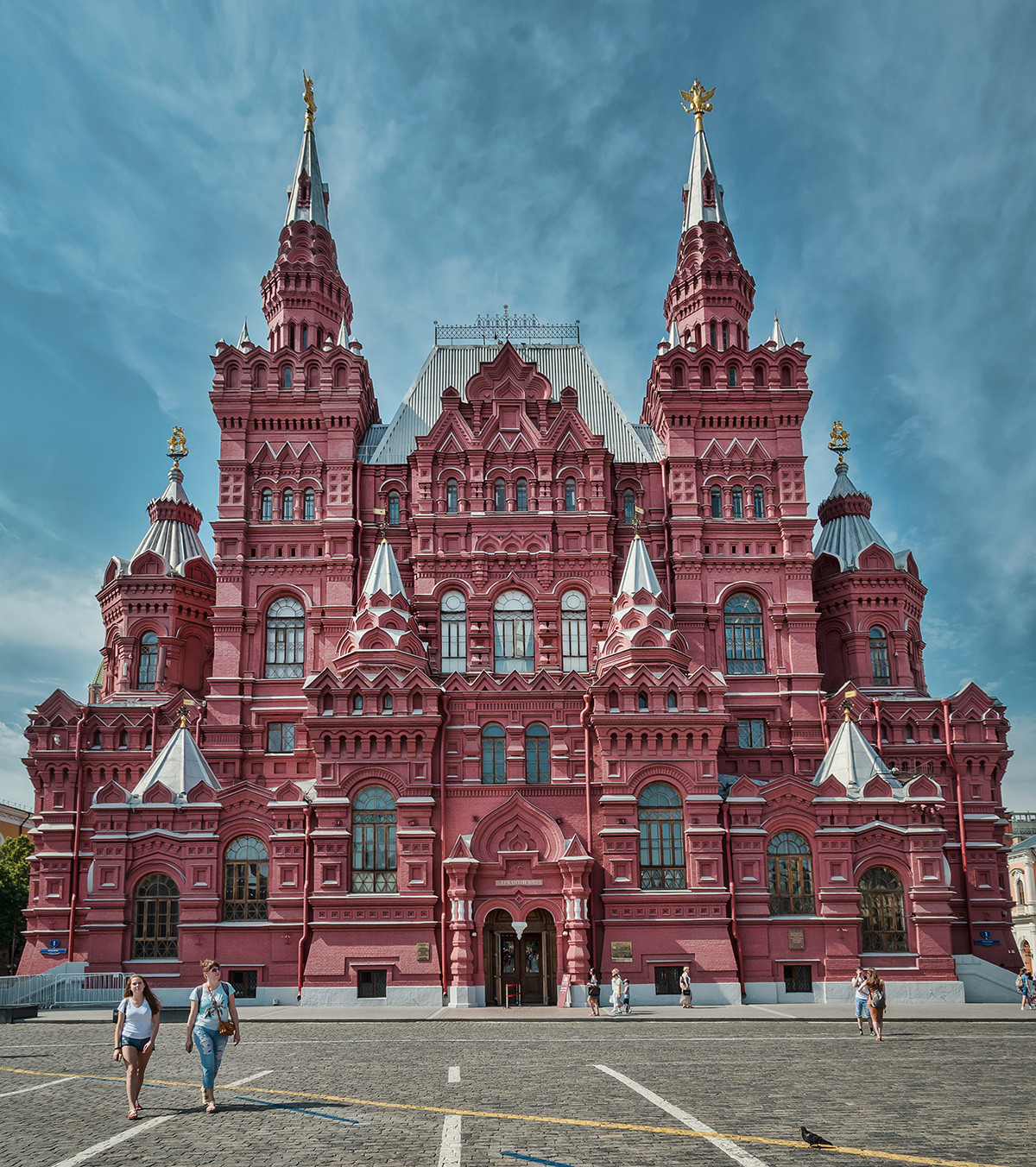
State Historical Museum
Skif-Kerch (CC BY-SA 4.0)Soon after the construction of the Historical Museum, a similar-style building of the City Duma was erected nearby (it now houses the Museum of the Patriotic War of 1812).
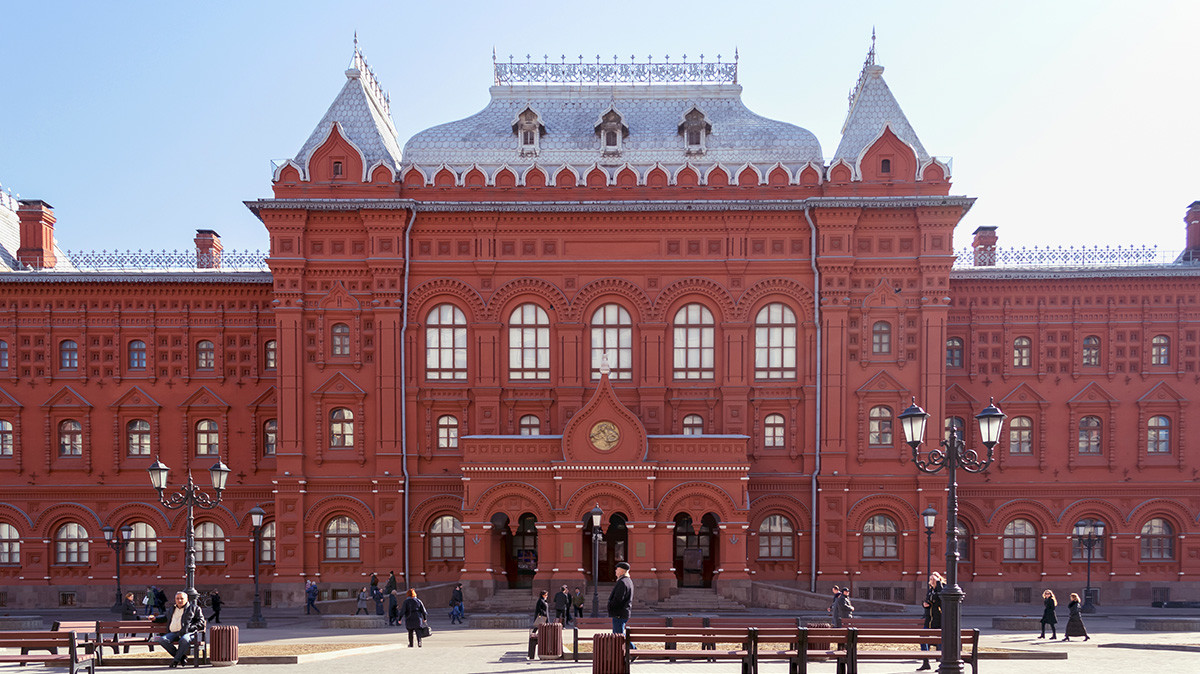
Former City Duma house, now Museum of the Great Patriotic War of 1812
Legion MediaWhen commissioning the building for a future Museum of Russian Antiquities, art collector Pyotr Shchukin wanted it to resemble the traditional chambers of Russian boyars. In Soviet times, the building became home to the Timiryazev Biological Museum.
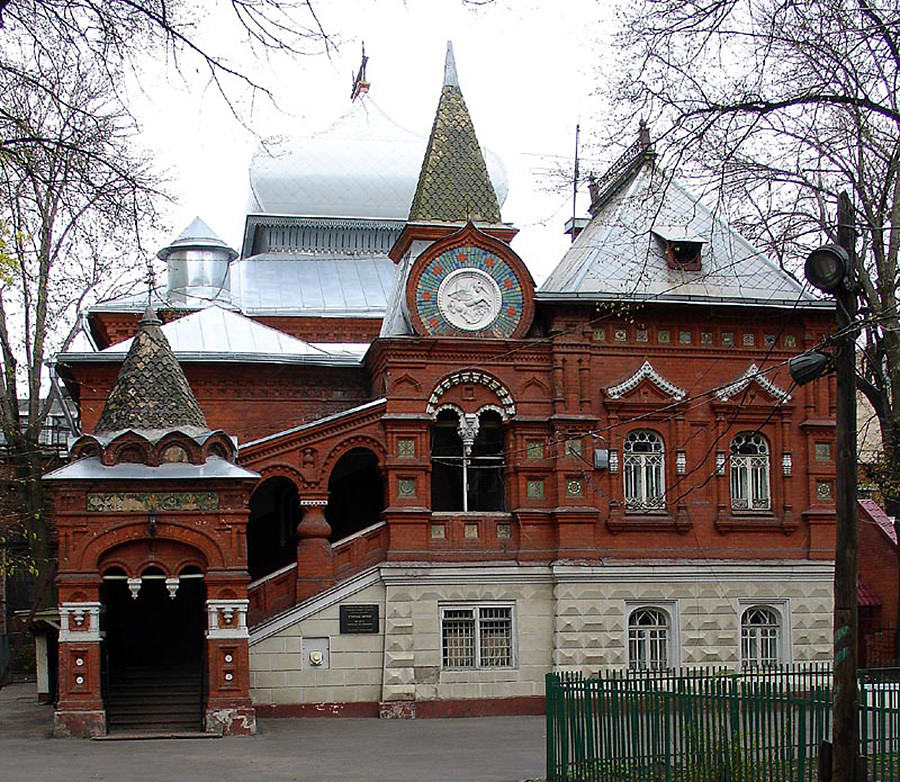
The Timiryazev Biological Museum in Moscow
NVO (CC BY-SA 2.5)There were also buildings imitating wooden architecture of the 16th-17th century. For example, the house of Slavophile Mikhail Pogodin in Moscow has numerous wooden patterns and carved elements, like many similar buildings throughout Russia.

Mikhail Pogodin's mansion in Moscow
Yelena Butko (CC BY-SA 4.0)In the 20th century, architects came up with a fanciful combination of the Pseudo-Russian Style and Art Nouveau. For example, the Yaroslavsky Station in Moscow, designed by Fyodor Schechtel, is built in this style.
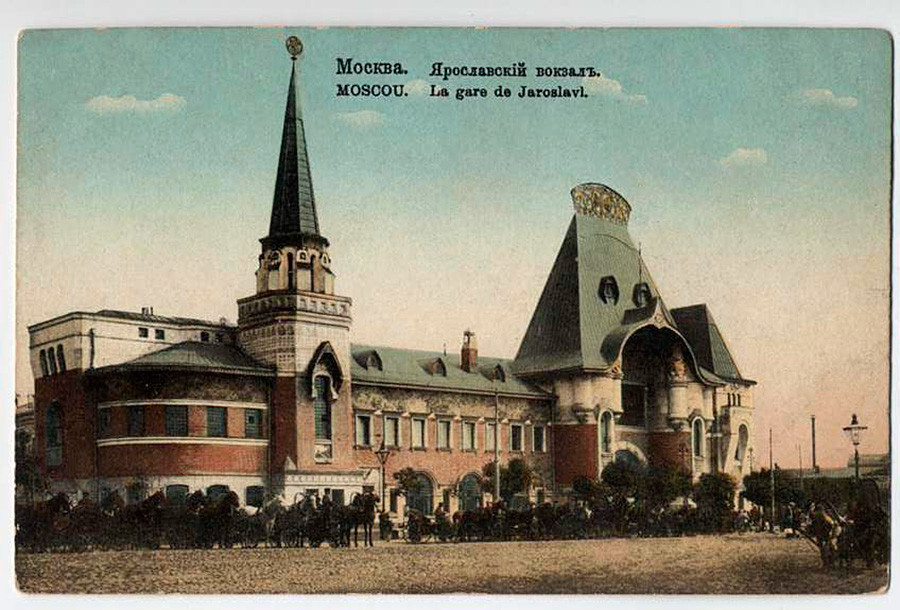
The Yaroslavsky Railway Station in Moscow on a pre-revolutionary postcard
Public DomainModern Russian style
The 2000s saw yet another revival of the traditional Russian style that could be described as neo-historicism. In the Moscow estate of Kolomenskoye, the wooden terem of Tsar Alexei Mikhailovich, father of Peter the Great, was restored according to old sketches.
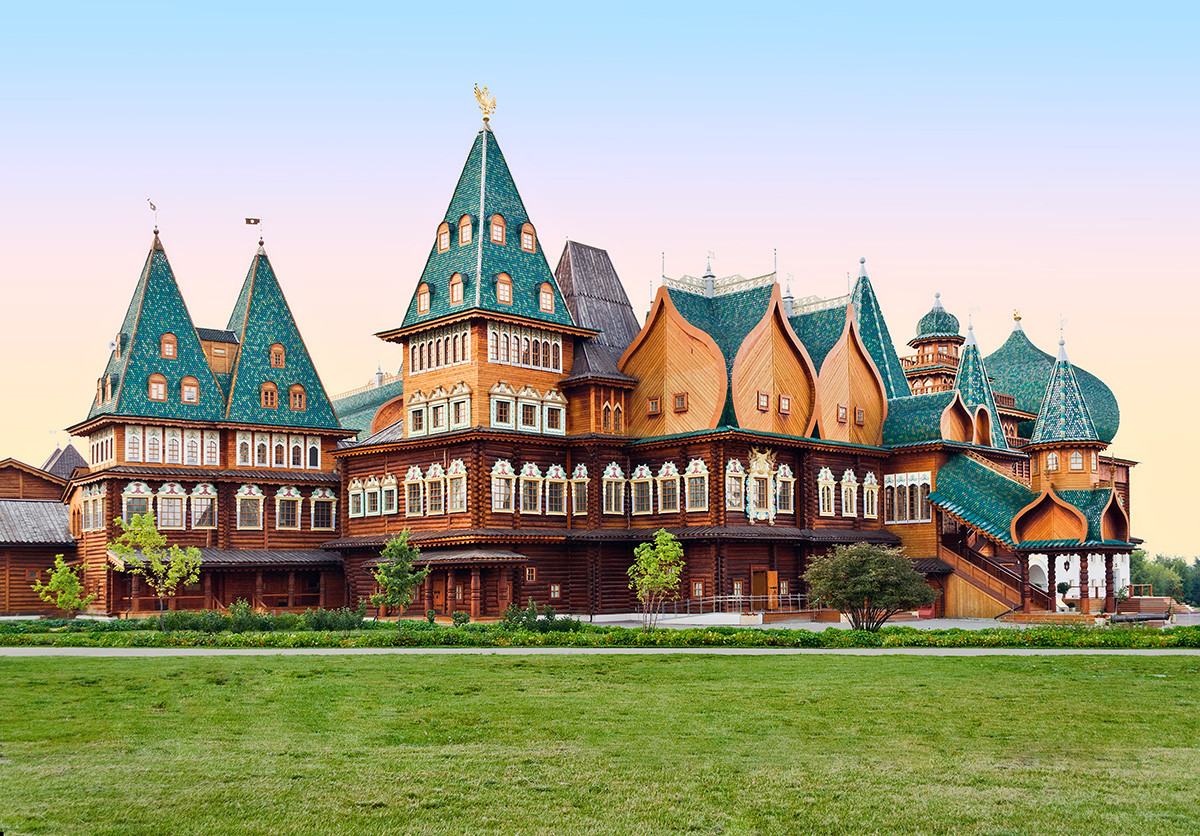
Alexei Mikhailovich's palace in Kolomenskoye
Legion MediaIn the Izmaylovo Park, an Izmaylovsky Kremlin entertainment complex was built in a style imitating Russian architecture of the 16th-17th centuries.
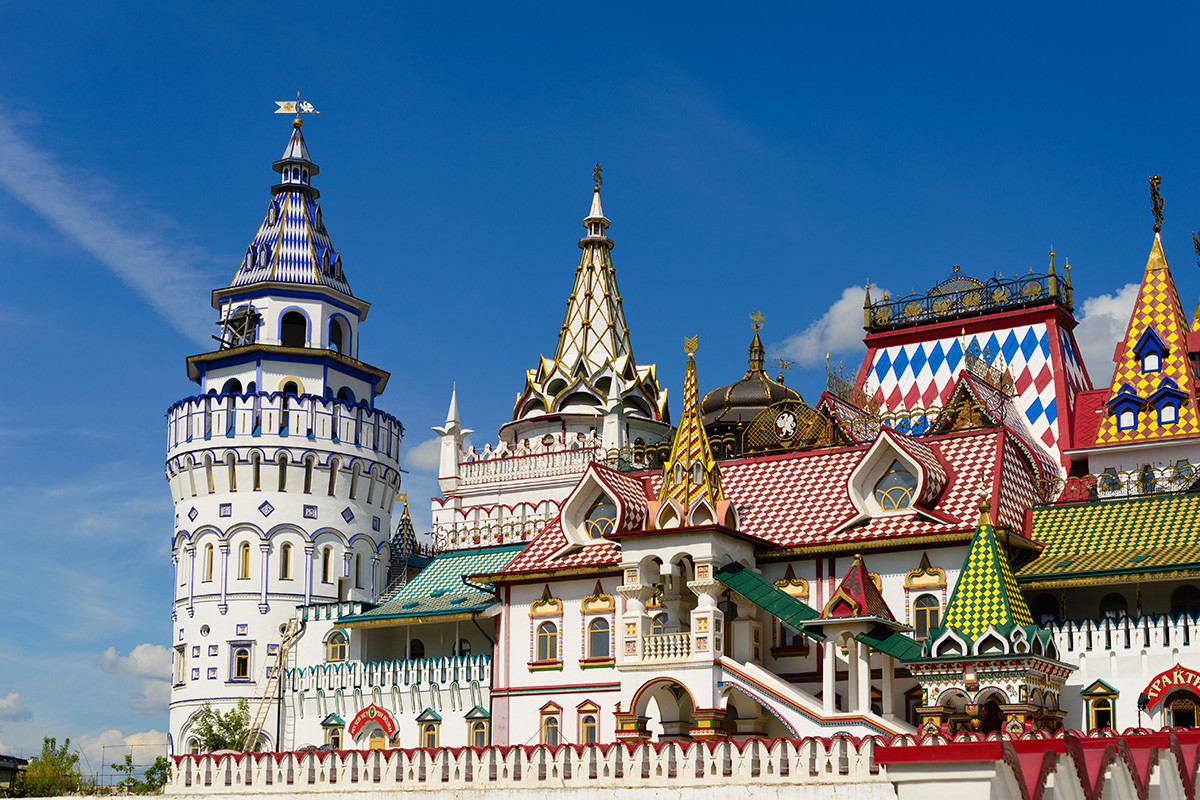
Izmailovsky Kremlin
Legion MediaTraditional Russian motifs have inspired businesses too: in the provinces there are hotels inviting visitors to stay in a traditional Russian hut or try a Russian banya. In recent years, more and more Russian restaurants have opened, offering both traditional Russian cuisine and a modern re-imagining of familiar products and recipes. One of the most famous Russian-style restaurant chains, MariVanna, has branches in London, New York, Moscow, and Baku and promises its customers a “genuine Russian spirit”.

The Dolce & Gabbana show during Fall 2012 Fashion Week in Milan (L), Ulyana Sergeenko - Couture Autumn Winter 2012 Runway (R)
Photoshot / Vostock-Photo; Paris Haute Couture Fashion Week/Getty ImagesFashion designers, both internationally famous ones as well as their lesser-known Russian colleagues, began to use national Russian motifs in their collections. Many of their elements reference traditional handicraft patterns, be it lace, flowers on Pavlovo Posad shawls, or blue-and-white Gzhel colors and patterns.
If using any of Russia Beyond's content, partly or in full, always provide an active hyperlink to the original material.
Subscribe
to our newsletter!
Get the week's best stories straight to your inbox
